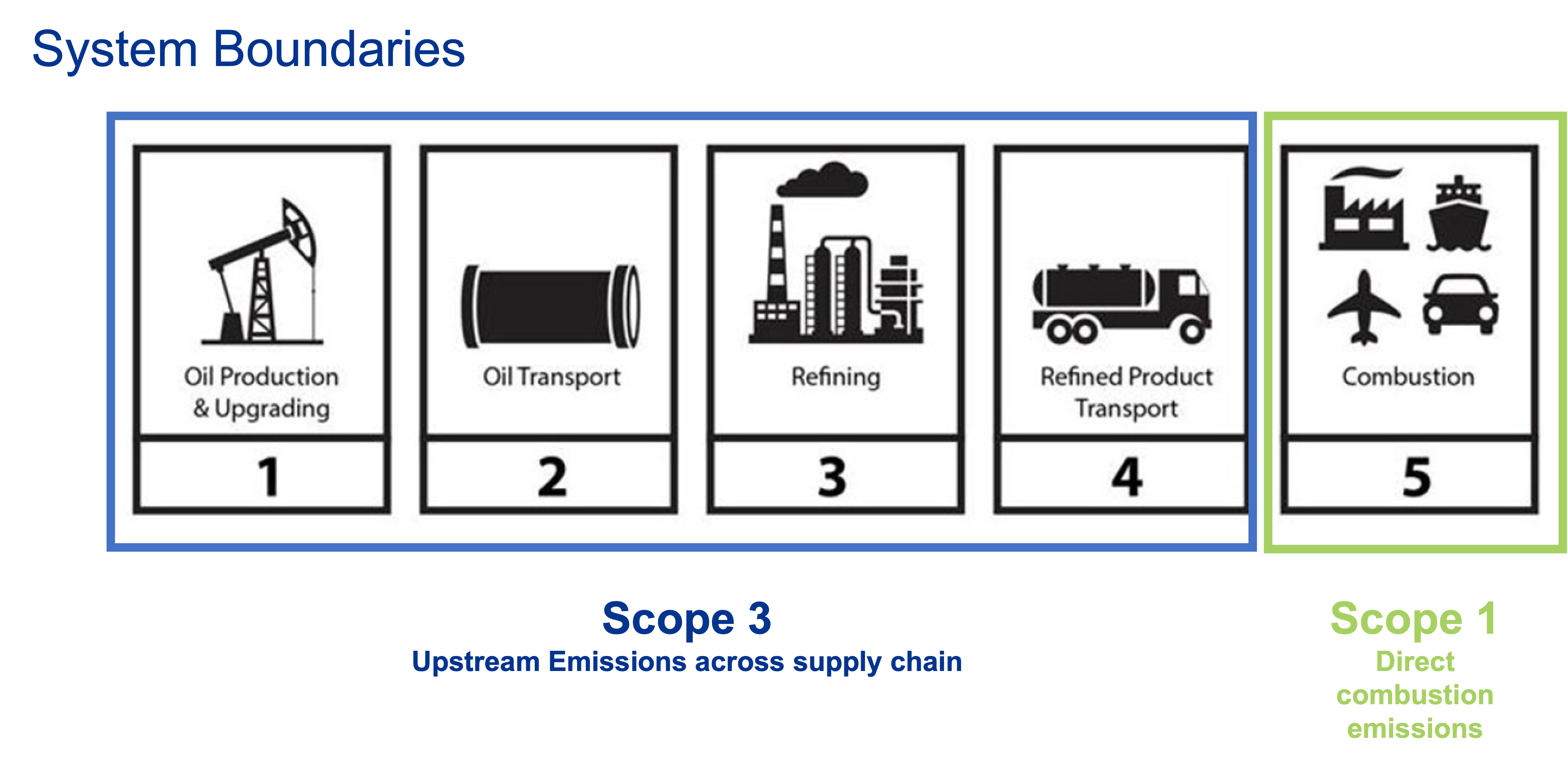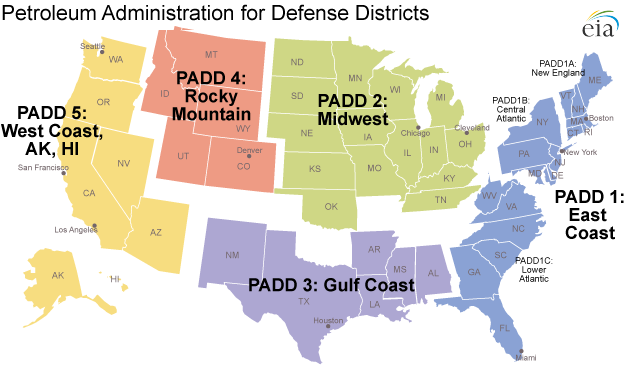Fuel oil (e.g., residual oil, distillate oil) has both scope 1 direct emissions and scope 3 indirect emissions. The upstream scope 3 emissions include the full life cycle of fuel oil production and processing, starting with the extraction of raw materials through to the final delivery of that fuel oil. Most emissions from fuel oil (>80%) are from the combustion of the fuel (scope 1). However, the scope 3 upstream emissions are an important to include in your emissions inventory to have more complete information when comparing across different energy options.
SIMAP now includes the ability to calculate scope 3 upstream emissions for fuel oil (specifically for distillate oil and residual oil). These upstream emissions are categorized as scope 3 category 3: fuel- and energy-related activities (FERA).
Fuel oil: Life cycle of fuel oil, from extraction of raw materials through combustion

What affects your fuel oil scope 3 emissions factor
- Your location. The fuel oil emissions factors are organized by regions called PADDs (Petroleum Administration for Defense Districts) for US states
- The type of fuel oil you are using (e.g., distillate oil, petroleum, gasoline)
Regions for fuel oil: PADDs
US states are organized into geographic regions called PADDs (Petroleum Administration for Defense Districts) for tracking data related to fuel oil. Emissions factors are available by PADD region. The PADD regions are PADD 1 (East Coast), PADD 2 (Midwest), PADD 3 (Gulf Coast), PADD 4 (Rocky Mountain), and PADD 5 (West Coast, Alaska, Hawaii).
Source: EIA 2012
In SIMAP, we use a US weighted average upstream emissions factor for fuel oil
The SIMAP default scope 3 emissions factor for fuel oil uses a weighted average of fuel oil production and use in the US.
If you would like to customize your fuel oil scope 3 emissions factor based on your location, then read one for more details.
Upstream scope 3 emissions factors for fuel oil by location
The scope 3 fuel oil emissions factors range from 3.05 to 4.15 kg CO2e/gallon across PADD regions. The US average is 3.55 kg CO2e/gallon. The data is from Cooney et al. 2017, an update to the 2005 NETL Petroleum Baseline Study. The data year is 2014.
Fuel oil scope 3 emissions factors
| Region | Fuel oil scope 3 kg CO2e/gallon |
| US average | 3.55 |
| PADD 1 | 3.05 |
| PADD 2 | 3.67 |
| PADD 3 | 3.47 |
| PADD 4 | 3.17 |
| PADD 5 | 4.15 |
Source: Cooney et al. 2017
How to enter your custom fuel oil emissions factor into SIMAP
You can customize your upstream fuel oil emission factors using the following steps:
- Go to the Data Entry tab > Emission factors page
- From the drop-downs, make the following selections: Scope 1 > On-campus stationary sources > Distillate oil OR Residual oil
- Now when you select the last drop-down, FERA emission factors will appear for all emission factor types
- Select the 'FERA CO2' emissions factor, enter your custom emissions factor in the text field for all applicable years, and click the green 'save' button at the end. Note: If using the emissions factors above, you should ONLY enter a factor in the CO2 field because the units are CO2-equivalents. The N2O and CH4 fields were intentionally left blank for fuel oil to avoid double-counting.
Which fuel oil FERA emissions factors are available in SIMAP?
The upstream emissions factors for fuel in SIMAP are only available in CO2-equivalents because that is the unit provided in the data source. Because we could not split this normalized emissions factor into specific greenhoues gases (CH4, N2O), we entered the CO2-equivalent emissions factor as the CO2 factor and left the CH4 and N2O factors blank to avoid double-counting. The same CO2-equivalent emissions factors are used across all years.
The scope 3 emissions factors for fuel oil can be applied to two types of fuel oil in SIMAP: Distillate oil (#1-4) and residual oil (#5-6).
Although NOx emissions are generated from upstream fuel oil, we do not yet have those emissions factors calculated and populated in SIMAP. If you have a custom upstream solar elecric emissions factor for NOx, there is a blank field on the emissions factors page where you can enter your custom factor.
Sources
Cooney, G. et al. 2017. “Updating the U.S. Life Cycle GHG Petroleum Baseline to 2014 with Projections to 2040 Using Open-Source Engineering-Based Models” Supporting Information. National Energy Technology Laboratory (NETL). Environmental Science & Technology 51: 977-987.
EIA (US Energy Information Administration) 2012. PADD regions enable regional analysis of petroleum product supply and movements. https://www.eia.gov/todayinenergy/detail.php?id=4890
NETL (National Energy Technology Lab) 2008. Development of Baseline Data and Analysis of Life Cycle Greenhouse Gas Emissions of Petroleum-Based Fuels. https://www.nata.aero/data/files/gia/environmental/bllcghg2005.pdf


